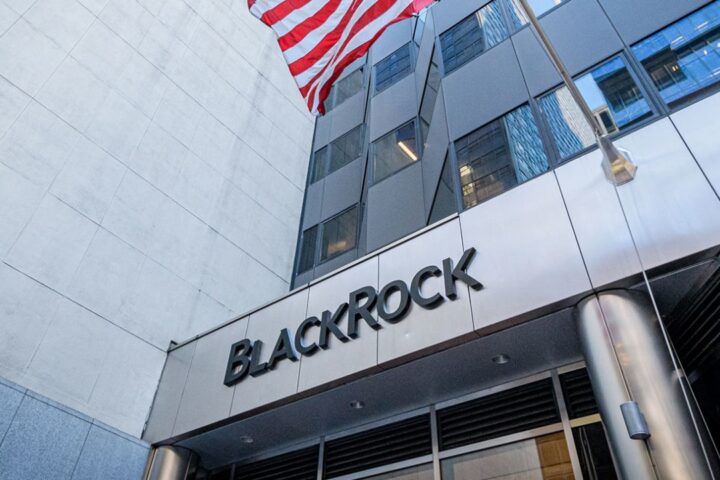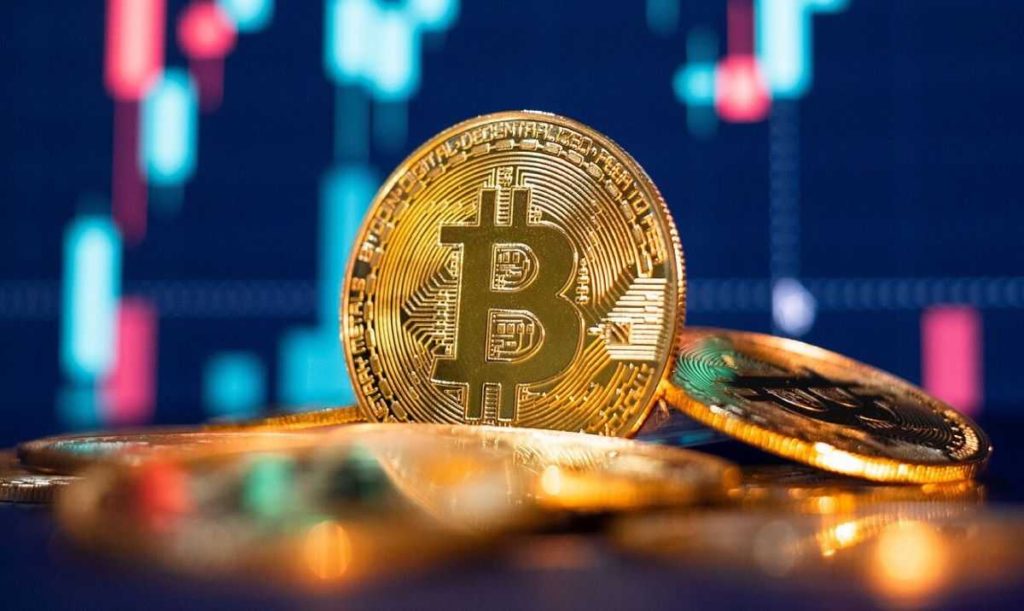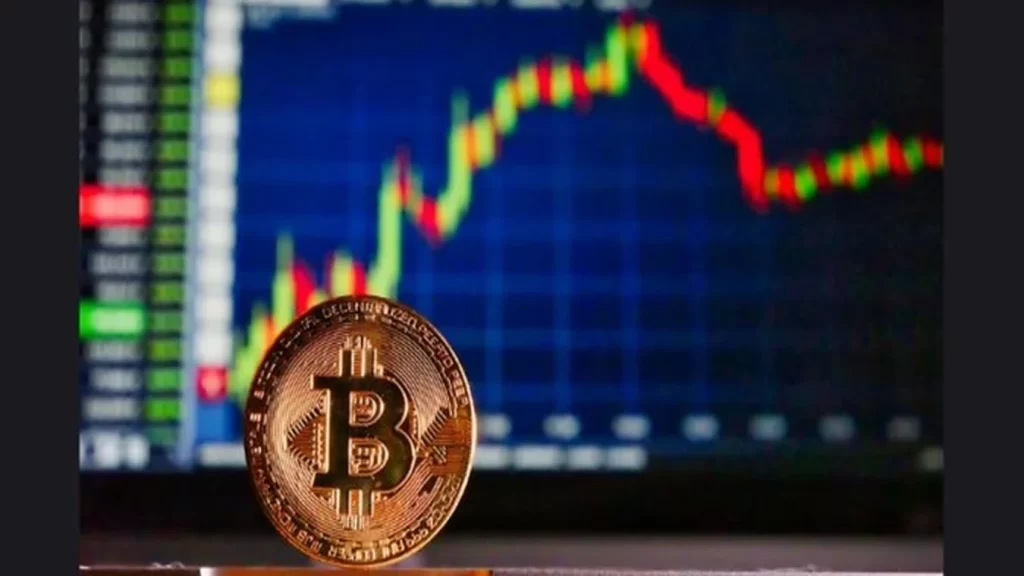Grayscale, the crypto asset manager, has seen a deceleration in outflows from its spot Bitcoin ETF, although analysts suggest there’s more potential for further depletion.
As per data from Bianco Research and Farside, the total outflow from the Grayscale Bitcoin Trust (GBTC) since its transition to a spot Bitcoin ETF reached $7 billion by Feb. 16.
Despite the significantly reduced rate of outflow, observers like ETF Store President Nate Geraci caution that the bleeding may not have ceased entirely.
January marked the peak of the exodus, witnessing $5.64 billion exiting GBTC by month-end, whereas February has recorded only $1.37 billion in outflows thus far.
In a Feb. 18 post on X, Jim Bianco, the founder of Bianco Research and a former Wall Street analyst, attributes much of the outflow to investors rebalancing portfolios and migrating to spot Bitcoin ETFs with lower fees.
He notes that the recent wave of ETF launches has slashed fees to between 0 and 12 basis points, in contrast to Grayscale’s 150 bps charge.
Bianco also highlights another factor contributing to the ongoing outflow from GBTC: the fund traded at a considerable discount to the BTC market price, approximately 44%, when BlackRock applied for its spot ETF in June 2023.
He explains, “A lot of money flows into ‘cheap’ BTC,” suggesting that Grayscale began closing this arbitrage-type trade upon its ETF conversion in January 2024.
READ MORE: Ether Price Surge Continues: Approaching $2,800 Mark Amidst Optimism and Caution
Nate Geraci remains cautious, indicating that it’s premature to assume the asset bleed has concluded.
He speculates that even with a substantial reduction in assets, Grayscale could still surpass other issuers combined.
Moreover, Geraci anticipates the potential launch of a “mini-GBTC,” a new spot Bitcoin ETF by Grayscale, with considerably lower fees.
Further outflows could materialise following a recent court order permitting bankrupt crypto lender Genesis to liquidate a portion of its investments in Grayscale.
Genesis reportedly held approximately $1.6 billion worth of shares in GBTC, the Grayscale Ethereum Trust, and the Grayscale Ethereum Classic Trust.
European Central Bank (ECB) executive board member Piero Cipollone addressed the European Parliament Committee on Economic and Monetary Affairs regarding the preparations for the issuance of a digital euro.
He outlined four key issues confronting the central bank and outlined how the ECB would ensure the public’s access to a freely available common means of payment.
Cipollone stated that the ECB had initiated the search for infrastructure providers for the European Central Bank digital currency (CBDC).
He stressed the importance of this proactive approach, stating, “Our readiness would be compromised if we started searching for possible suppliers only after that decision [to launch the digital euro] is made.”
Additionally, he highlighted that agreements would remain adaptable to legislative and technological advancements.
Moreover, Cipollone clarified that only legal entities with registered offices in the EU and controlled by EU nationals would be eligible for participation in the procurement process, potentially impacting Amazon’s involvement in the project.
Regarding the digital euro rulebook, Cipollone advocated for a unified framework encompassing rules, standards, and procedures to ensure harmonious implementation.
He emphasised that the digital euro should function similarly to cash, liberating users from reliance on international payment processors and ensuring uniform service across the eurozone.
Cipollone likened the digital euro infrastructure to railway tracks, accessible to various private entities while remaining state-owned.
However, concerns were raised by the European Money and Financial Forum regarding the legal implications of designating the digital euro as legal tender, citing issues surrounding the status of integrated private payment providers.
READ MORE: Solana-Based Exchange Surpasses £300 Million Milestone in 24 Hours on Solana Blockchain
To maintain financial stability, safeguards are being integrated into the digital euro design, ensuring it remains interest-free to avoid competing with savings institutions.
Restrictions will be placed on public digital euro holdings, with businesses and financial institutions barred from holding it directly. Instead, a mechanism will be established to link CBDC wallets with bank accounts, facilitating transactions without pre-funding the wallets.
Finally, addressing privacy concerns, Cipollone assured that the digital euro would offer high standards of privacy for online payments, surpassing current commercial solutions.
Offline transactions would mirror the privacy of cash, with only the payer and payee possessing transaction details.
Online transactions would provide minimal pseudonymised data to the ECB for settlement purposes, with users retaining greater control over their information compared to private payment systems.
Additionally, the digital euro would boast state-of-the-art cybersecurity measures.
VanEck has agreed to pay a £1.75 million fine to settle charges brought by the United States Securities and Exchange Commission (SEC) regarding its launch of a social media-focused exchange-traded fund (ETF) in 2021.
The SEC imposed a civil penalty on the investment adviser.
On February 16, the SEC disclosed in a statement that during the launch of the VanEck Social Sentiment ETF in March 2021, VanEck did not fully disclose the involvement of a prominent social media personality in marketing the product.
The ETF aimed to track an index using “positive insights” from social media and other data sources.
However, the SEC found that VanEck attempted to enhance the fund’s success through social media and collaborated with an influential and divisive online personality to increase its appeal.
Although the financial watchdog did not explicitly name the influencer, reports from 2021 had previously linked David Portnoy, founder of Barstool Sports, to the promotion of the VanEck ETF.
The regulator observed an undisclosed detail: the influencer’s fee was tied to the fund’s growth, ensuring higher compensation as the fund expanded.
The SEC criticised the undisclosed agreement, focusing on VanEck’s failure to inform the ETF’s board about the influencer’s intended involvement.
This undisclosed arrangement had significant implications for the management contract and fund operations, breaching the board’s duty to oversee financial aspects during advisory contract discussions.
Andrew Dean, co-chief of the SEC Enforcement Division’s Asset Management Unit, emphasised the importance of transparency from advisers.
READ MORE: Coin Metrics Research: Nation-States Unable to Destroy Bitcoin and Ethereum Networks
He noted that the failure to provide accurate disclosures hampers the board’s ability to properly assess the advisory contract and understand the economic impact of licensing agreements.
VanEck accepted the SEC’s order acknowledging its violation of the Investment Company Act and Investment Advisers Act.
The company agreed to a cease and desist order, censure, and the required financial penalty without admitting or denying the findings.
The announcement comes after the company’s decision to terminate one of its ETF products, the Bitcoin Strategy ETF, a month ago following a comprehensive performance evaluation.
In an apparent effort to boost the popularity of its dedicated spot Bitcoin ETF with the ticker HODL, VanEck indicated on February 15 that it would reduce its fees from 0.25% to 0.20% starting February 21.
Bitcoin exchange-traded funds (ETFs) have experienced another robust week, with net inflows surpassing £2.2 billion from Feb. 12–16.
According to Bloomberg analyst Eric Balchunas, the combined volume exceeded the inflows received by any other among the 3,400 ETFs available in the United States.
BlackRock’s iShares Bitcoin Trust (IBIT) attracted the majority of capital, accumulating positive flows of £1.6 billion over the week, as per data from BitMEX Research.
“£IBIT alone has taken in £5.2b YTD, which is 50% of BlackRock’s total net ETF flows, out of 417 ETFs,” noted Balchunas.
Among the spot Bitcoin ETFs holding billions of pounds in assets, Fidelity’s Wise Origin Bitcoin Fund witnessed significant inflows, drawing £648.5 million over the last five trading sessions.
The Ark 21Shares Bitcoin ETF secured £405 million during the same period, while the Bitwise Bitcoin ETF attracted £232.1 million in capital inflows.
However, outflows from the Grayscale Bitcoin Trust are affecting the collective performance of the other recently approved spot Bitcoin ETFs.
READ MORE: Bitcoin Hash Rate Expected to Drop by Up to 20% Post Halving, Analysts Predict
The fund experienced £624 million in withdrawals from Feb. 12–16 as investors continued to divest.
Since its transition from an over-the-counter product to a spot ETF on Jan. 10, Grayscale’s fund has seen over £7 billion in capital outflows.
The new ETFs are believed to be one of the factors propelling Bitcoin’s recent price surges.
The cryptocurrency has surged 91% in the past four months, buoyed by market sentiment surrounding the approval of spot Bitcoin ETFs by the U.S. Securities and Exchange Commission (SEC) on Jan. 10.
During the week, Bitcoin gained nearly 7% and is trading at £51,434 at the time of writing, marking a 24% increase in February.
Major banks and financial institutions are also taking note of the new ETFs.
In a Feb. 14 letter, a trade group coalition representing Wall Street’s largest firms urged the SEC to consider modifications to the Staff Accounting Bulletin 121, which offers guidance on accounting for crypto asset custody obligations.
The proposed revision would permit banks to serve as custodians of the BTC funds.
Ether’s price has been steadily climbing over the past ten days, marking a gain of 21.5% and edging close to the £2,800 mark.
This surge in the cryptocurrency’s value is attributed to the robust inflow into the recently introduced spot Bitcoin exchange-traded fund (ETF) in the United States.
However, Ether possesses additional catalysts that could potentially propel its price beyond the £3,000 threshold—a level that left its mark during its last trial in March 2022.
Will Ether’s anticipated ascent to £3,000 unfold differently this time?
From an optimistic standpoint, Ether may solidify its position as the second cryptocurrency with a spot ETF listed on US exchanges.
This would set it apart from rivals like Solana and BNB Chain in terms of accessibility and regulation. US exchanges, including Binance and Coinbase, are still entangled in legal battles with the US Securities and Exchange Commission (SEC) concerning security offerings.
Hence, approval of an Ethereum ETF in the US would notably reduce uncertainty for its investors.
Other factors bolstering Ether’s prospects include the forthcoming Dencun network upgrade slated for March 13.
This hard fork aims to, among other objectives, slash transaction costs on the Ethereum layer 2.
By providing more block space and lowering gas costs for rollups, these modifications could potentially stimulate the usage of its decentralized applications (DApps) and escalate deposits in its smart contracts, thereby driving up demand for ETH.
READ MORE: Bitcoin Holds Ground at $52,000 Amidst US Inflation Concerns
Ether bulls have ample grounds to believe that £3,000 is within grasp, but historical evidence underscores the challenge of sustaining such price levels.
For instance, in the three weeks leading up to April 3, 2022, ETH surged by 42%, soaring from £2,520 to £3,580.
However, the rally proved unsustainable as its price plummeted by 46% in the subsequent 40 days. Traders now question whether Ether could encounter a similar fate this time around.
The first indicator to scrutinise is Ether’s futures premium, which reflects the demand for leverage between longs (buyers) and shorts (sellers).
Professional traders favour monthly futures contracts due to the absence of a variable funding rate, but these instruments typically trade at a 5% to 10% premium to compensate for their extended settlement period.
Jupiter Asset Management’s internal compliance team has reportedly withdrawn its investment in the 21Shares Ripple XRP exchange-traded product (ETP) due to regulatory issues in Ireland.
The firm initially invested over $2 million into the fund, incurring a loss of $834.
According to a recent report from the Financial Times, Jupiter invested $2,571,504 into the 21Shares Ripple XRP ETP (AXRP) during the first half of 2023.
However, the exact date of the initial investment wasn’t specified. Meanwhile, the ETP yielded a one-year return of 31.7%, but it has declined by 13.2% in the past six months.
The AXRP tracks the performance of XRP, having launched in March 2019. According to 21Shares website, the ETP has assets under management (AUM) totalling $50,497,518.
The report explained that asset managers operating under Ireland’s Undertakings for Collective Investment in Transferable Securities Directive (UCITS) are restricted from exposure to crypto.
After the compliance team at Jupiter detected the trade in one of its Irish UCIT funds, the company reportedly sold off the investment.
Jupiter liquidated its Ripple XRP ETP holding for $2,570,670, incurring a loss of $834.
“The trade was made, picked up by our regular oversight process and then cancelled.”
READ MORE: Genesis Granted Approval to Liquidate £1.3 Billion in Grayscale Bitcoin Trust Shares
This comes amid ongoing discussion about the potential approval of an XRP exchange-traded fund (ETF), particularly after the recent approval of 11 spot Bitcoin ETFs by the United States Securities and Exchange Commission (SEC).
However, due to the legal dispute between Ripple and the SEC regarding whether XRP qualifies as a security, some analysts speculate that it may be unlikely.
On Jan. 24, Cointelegraph reported that CoinShares’ head of product, Townsend Lansing, explained that an XRP ETF wouldn’t be feasible unless the SEC is forced to or agreed to concede that XRP is not a security.
Meanwhile, Brad Garlinghouse, CEO of Ripple, believes that the recent approval of several spot Bitcoin exchange-traded funds (ETFs) in the United States will only open the door for more crypto ETFs in 2024.
However, in a recent interview with CNBC, Garlinghouse stopped short of explicitly predicting that an XRP ETF would be approved by the SEC, but he expects an Ethereum ETF to get the green light in the near future.
OpenAI has purportedly entered into an agreement that has escalated the valuation of the San Francisco artificial intelligence (AI) company to £80 billion or more, indicating an almost threefold surge in less than 10 months.
As per a report in The New York Times, the company intends to vend current shares in a tender offer spearheaded by Thrive Capital. This strategy permits employees to vend their shares, deviating from conventional funding rounds aimed at garnering capital for business activities.
In a similar arrangement in 2023, venture capital firms Thrive Capital, Sequoia Capital, Andreessen Horowitz, and K2 Global consented to procure OpenAI shares in a tender offer, establishing the company’s worth at roughly £29 billion, as per the report.
OpenAI CEO Sam Altman has also purportedly been engaging in discussions to amass funds for a chip venture and advocating collaborations between the company and “various investors,” chip manufacturers, and energy suppliers.
The CEO affirmed that OpenAI would consent to be a “significant customer” of the new factories as he endeavours to enhance the world’s chip-producing capability to propel novel AI-related tools.
In December 2023, it was disclosed that OpenAI was deliberating with investors contemplating injecting over £100 billion into the company.
In November 2023, the OpenAI board expelled Altman, inciting turmoil and casting doubts on the company’s future.
READ MORE: Uniswap Foundation Announces Launch Date for Protocol’s v4 Following Ethereum’s Dencun Upgrade
Employees threatened to resign en masse, prompting Altman’s reinstatement, accompanied by the departure of some board members.
OpenAI enlisted law firm WilmerHale to scrutinise the board’s decisions and Altman’s stewardship. The report on the matter is anticipated in early 2024.
The unveiling of OpenAI’s ChatGPT in late 2022 sparked interest in AI, instigating companies to delve into methods to harness the potential of the technology.
The AI company revealed its inaugural text-to-video model on Thursday, 15th February.
While acknowledging that the model still requires refinement, the new generative AI model dubbed Sora generates intricate videos from simple text prompts, extends existing videos, and even concocts scenes based on a static image.
OpenAI did not promptly respond to a Cointelegraph request for comment on the agreement.
Major banks and financial institutions in the United States are urging the United States Securities and Exchange Commission (SEC) to revise its definition of crypto assets, potentially enabling them to assume a more significant role in the crypto sphere, such as serving as custodians for the recently sanctioned spot Bitcoin exchange-traded funds.
On 14th February, a coalition of trade groups including the Bank Policy Institute, American Bankers Association, Financial Services Forum, and Securities Industry and Financial Markets Association presented their argument in a letter to SEC Chair Gary Gensler.
The coalition highlighted the recent endorsement of spot Bitcoin (BTC) exchange-traded products in the U.S., observing the absence of American banks as custodians for the approved products.
“The Commission recently approved 11 Spot Bitcoin ETPs, allowing investors access to this asset class through a regulated product.
However, notably absent from those approved products are banking organizations serving as the asset custodian, a role they regularly play for most other ETPs.”
The letter called for the SEC to consider adjustments to Staff Accounting Bulletin 121 (SAB 121), issued in March 2022, which offers guidance on accounting for crypto asset custody obligations.
They noted that it has been two years since the issuance of the guidance, and there have been “several relevant developments” during this period, including the approval of spot Bitcoin ETFs.
The existing guidance mandates banks to include crypto assets on their balance sheet, resulting in increased costs and hindrances to offering crypto custody services on a large scale.
READ MORE: Genesis Granted Approval to Liquidate £1.3 Billion in Grayscale Bitcoin Trust Shares
The coalition has now urged the SEC to refine the definition of crypto assets in SAB 121 to exclude traditional assets recorded on the blockchain.
This would prevent assets like tokenized deposits from falling under the stringent crypto guidelines.
They also seek exemptions for banks from the on-balance sheet requirements while retaining the disclosure obligations, enabling them to engage in certain crypto activities while maintaining transparency for investors.
In a post on X, Bitwise chief investment officer Matt Hougan stated that the letter indicates a change in the “tone around crypto regulation in Washington,” with others suggesting that banks are expressing interest in joining the “digital finance wave.”
“US banks, left off key bitcoin ETF roles, are pushing SEC to tweak guidance around holding digital assets,” summarised Bloomberg ETF analyst Eric Balchunas.
Meanwhile, TheBitcoin Therapist, author of a weekly Bitcoin newsletter, echoed the sentiment:
“Bankers are getting annoyed they can’t hold spot Bitcoin ETFs for their customers. The Q1 FOMO is already driving them mad.”
According to preliminary data from Farside, total aggregate inflows to the recently launched spot Bitcoin ETFs have just surpassed $4 billion despite an acceleration in outflows from Grayscale.
Bankrupt cryptocurrency lender Celsius has announced that most eligible creditors have now collected their liquid crypto distributions from its two distribution agents: payments giant PayPal and crypto exchange Coinbase.
In a recent court filing, Kirkland & Ellis — the legal team representing Celsius — provided an update on the creditor distributions outlined in the restructuring plan.
This follows Celsius’ recent announcement that it exited bankruptcy, which it initially filed for in July 2022.
According to Kirkland & Ellis, crypto distributions to holders in the United Kingdom are facilitated through PayPal, while overseas holders are managed by Coinbase as the distribution agent.
The lawyers declared that £2 billion worth of crypto had been transferred to creditors, including 20,255.66 Bitcoin and ETH.
“As of the date hereof, a significant number of Holders have successfully collected their Liquid Cryptocurrency from PayPal/Venmo and Coinbase: Nearly 75% of the BTC/ETH set to be distributed by PayPal/Venmo and through Coinbase has already been collected.”
READ MORE: Bakkt Secures Regulatory Approval to Raise $150 Million Amid Financial Concerns
However, the filing explained that account holders who did not agree to the restructuring plan will not receive any distribution until their individual claims are resolved.
Additionally, it mentioned that certain account holders might face challenges in receiving their distribution if Coinbase or PayPal flags any Anti-Money Laundering (AML) or compliance issues.
“Distribution Agents have discretion to refuse making distributions to anyone they believe does not fulfil their compliance and other requirements,” the filing states.
There has been speculation within the crypto industry about how the actions in the restructuring plan might affect the broader crypto market.
On Jan. 5, Cointelegraph reported that Celsius started recalling and rebalancing its crypto assets to ensure timely distributions to creditors.
However, blockchain analytics firm Nansen highlighted at the time that almost a third of the ETH in the pending withdrawal queue currently belongs to Celsius.
In October 2023, Celsius asked the court to approve its restructuring plan, hoping to have creditors repaid before the end of 2023.
Meanwhile, Alex Mashinsky, the former CEO of the now-defunct crypto lender, is scheduled for trial in September 2024 regarding Celsius’ collapse.
However, his legal team has recently faced scrutiny for a potential conflict of interest, as it also represents Sam Bankman-Fried, the former CEO of bankrupt crypto exchange FTX.
On Feb. 6, U.S. Prosecutors raised concerns about lawyers Marc Mukasey and Torrey Young, who have both filed notice of appearances in the criminal cases against the former crypto CEOs.
Cointelegraph recently reported that the U.S. government called for a Curcio hearing, in which the judge may ask questions about a potential conflict of interest and why both lawyers were involved in Bankman-Fried and Mashinsky’s cases.
Up to 20% of Bitcoin’s present hash rate may cease operation following the Bitcoin halving, as block rewards diminish and only the most efficient mining rigs persist.
Towards the conclusion of 2023, approximately 70% of the Bitcoin hash rate stemmed from eight ASIC miner models, as indicated by Galaxy’s mining analysts in a report dated February 14, citing Coin Metrics data.
“Given how sensitive the breakevens are for the various ASIC models to Bitcoin price and transaction fees as a percent of rewards, we estimate that between 15 – 20% of network hash rate coming from the ASIC models […] could come offline,” the analysts articulated.
Galaxy’s forecast considered potential future power costs.
It computed the breakeven threshold for mining rig models based on “post-halving economics,” with each mined Bitcoin block slated to halve rewards from 6.25 BTC to 3.125 BTC, “transaction fees constituting 15% of rewards and a Bitcoin price of $45,000.”
According to Galaxy’s more conservative projections, nearly all outdated mining rigs — particularly Bitmain’s S9, Canaan’s A1066, and MicroBT’s M32 models — would be decommissioned, while about half of MicroBT M20S and Bitmain S17 models would persist online.
These five models collectively accounted for roughly 15% of Bitcoin’s hash rate by the end of 2023.
READ MORE: BONK Memecoin Surges 7% Amidst Revolut Partnership Rumors
Enduring predominantly would be the Antminer S19 and S19J Pro, newer and more prevalent models that comprised over half of Bitcoin’s hash rate in 2023, alongside Canaan’s A1246, albeit a minor fraction of each might still deactivate in locales with elevated operational expenses.
Nevertheless, a bleaker scenario would witness almost all older models nearing complete deactivation, although Galaxy once more anticipates that Canaan’s A1246 and both S19 models might endure.
Galaxy’s analysts acknowledged that their estimates could be influenced by certain business choices.
Miners utilising “older and more inefficient machines” are likely to implement bespoke firmware to enhance their rig’s efficiency and yield, whilst certain miner models may transition to miners with more economical power costs instead of shutting down.
The analysts also speculated that miners employing the newer S19 models might struggle to maintain profitability, and those employing older mining rigs might purchase them as an upgrade.
The Bitcoin halving will be enacted at block number 840,000, anticipated to be mined around April 20, according to data from Blockchair.
Submit a Cointelegraph PR











